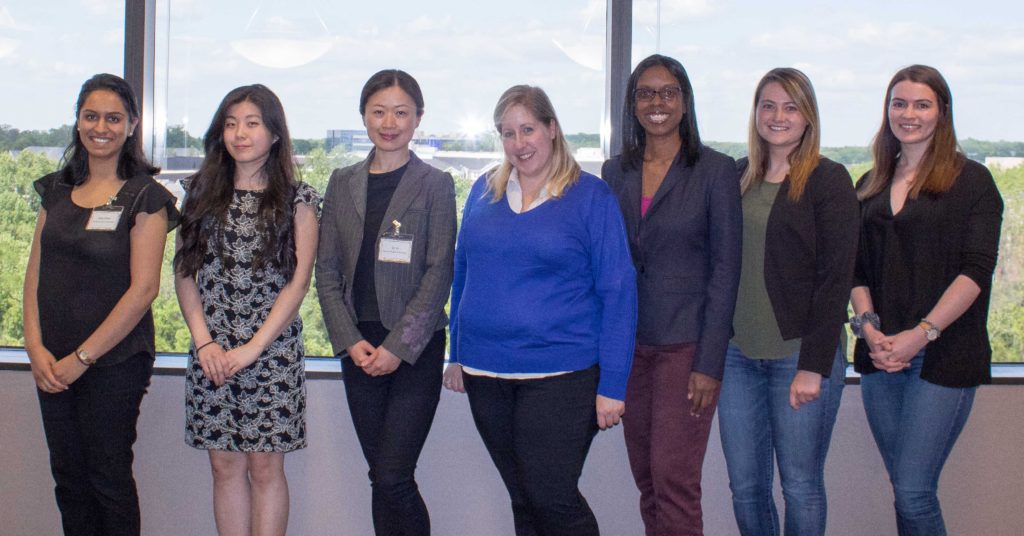Satisfying the Written Description Requirement for a Genus based on a Disclosure of a Species of the Genus
May 8, 2017 – Hologic, Inc. v. Smith & Nephew, Inc. is related generally to the written description requirement under 112 paragraph 1 (pre-AIA). The Court of Appeals for the Federal Circuit (CAFC) affirmed the Patent Trial and Appeals Board’s (PTAB’s) decision that a genus, claimed in a child application, was adequately disclosed by a species in the specification of a parent application in accordance with the written description requirement.
Smith & Nephew (appellees) secured U.S. Patent No. 8,061,359 on a surgical endoscopic cutting device and method for the cutting device’s use (the ‘359 patent, issued Nov. 22, 2011). The ‘359 patent claims priority to earlier-filed PCT International Publication WO 99/11184 by the same inventor (the Emanuel PCT, published March 11, 1999).
Claim 1 of the ‘359 patent recites a “light guide” that is “permanently affixed” to a “first channel” of the apparatus. This article focuses on the analysis surrounding the light guide. The Emanuel PCT specifies “a connection 8 for a light source . . . for connection to a fibre optics bundle which provides for lighting” (emphasis added). The Examiner of the ‘359 patent objected to the drawings for not showing the “light guide.” Smith & Nephew addressed this objection by amending the specification to state: “A connection 8 for a light source . . . for connection to a light guide, such as a fibre optics bundle which provides for lighting” (emphasis added). The Examiner issued the ‘359 patent thereafter.
Hologic (appellant) requested inter partes reexamination (IPR) of the ‘359 patent, and the PTO granted the reexamination. The IPR Examiner found that the ‘359 patent could not claim priority to the Emanuel PCT because the “fibre optics bundle” of the Emanuel PCT did not provide adequate written description for the “light guide” of the ‘359 patent’s claims. Thus, priority to the Emanuel PCT was severed, so the Emanuel PCT invalidated the ‘359 patent’s claims as obvious in view of a secondary reference.
Smith & Nephew appealed to the PTAB. The PTAB found that the disclosure in the Emanuel PCT provides sufficient written description for the “light guide” of the ‘359 patent, thereby preserving the priority claim of the ‘359 patent to the Emanuel PCT. Thus, the PTAB reversed the IPR Examiner’s rejection of the ‘359 patent’s claims. A more detailed description of the PTAB’s reasoning is provided below. Hologic appealed to the Federal Circuit and appeared before Judges NEWMAN, WALLACH, and STOLL. Judge STOLL authored the opinion.
Claim 1 of the ‘359 patent reads in relevant part:
1. A method for removal of tissue from a uterus, comprising: inserting a distal region of an endoscope into said uterus, the endoscope including a valve and an elongated member defining discrete first and second channels extending from a proximal region of the elongated member to the distal region, the second channel having a proximal end in communication with the valve such that fluid from the valve is able to flow into and through the second channel to the uterus, and the first channel having a light guide permanently affixed therein and being sealed from the second channel to prevent fluid from the valve from entering the uterus through the first channel. . . (emphasis added).
The specification of the ‘359 patent reads, as amended and in relevant part: “[a] connection 8 for a light source is also present, for connection to a light guide, such as a fibre optics bundles which provides for lighting at the end of lens 13.” Col. 3 ll 55-58.
The specification of the Emanuel PCT reads in relevant part:
“A connection 8 for a light source is also present, for connection to a fibre optics bundle which provides for lighting at the end of lens 13.” Emanuel PCT at 4:34-36. See also U.S. Patent No. 7,249,602, which issued from the Emanuel PCT and of which the ‘359 patent is a divisional, at para. [0030].
Hologic appealed the PTAB’s decision that the ‘359 patent is entitled to priority to the Emanuel PCT. Specifically, Hologic contended that the obviousness rejection should be reinstated based on the Emanuel PCT not satisfying the written description requirement of pre-AIA 35 U.S.C. 112 paragraph 1. Hologic contends that the Emanuel PCT does not provide adequate description of the “light guide,” as well as the “permanent affix[ture]” of the light guide in a “first channel” claimed in the ‘359 patent. As stated above, this article focuses on the analysis of the written description of the light guide.
The CAFC affirmed the PTAB’s findings that the Emanuel PCT provides written description support for the claims of the ‘359 patent, and that the ‘359 patent is entitled to claim priority to the Emanuel PCT, using a substantial evidence standard. Thus, the Emanuel PCT is not prior art to the ‘359 patent and the obviousness rejection was reversed.
A summary of the relevant written description law follows. To support priority, the specification of a parent patent must disclose what the child patent claims according to the written description requirement of pre-AIA 112 Paragraph 1. Slip Op. at 6, citing In re Katz at 1322. Ariad Pharm. v. Eli Lilly provides the standard: “based on ‘an objective inquiry into the four corners of the specification from the perspective of a person of ordinary skill in the art . . ., the specification must describe an
invention understandable to that skilled artisan and show that the inventor actually invented the invention claimed . . . . In other words, the test for sufficiency is whether the disclosure of the [earlier] application relied upon reasonably conveys to those skilled in the art that the inventor had possession of the claimed subject matter’ as of that earlier filing date.” Slip Op. at 7, citing Ariad at 1351.
The PTAB reasoned (and the CAFC agreed) that field of the invention is a predictable art, meaning that a lower level of detail is required to satisfy the written description requirement than for unpredictable arts (e.g., pharmaceutical arts, biological arts, etc.). Slip Op. at 7, citing Ariad at
1351. The PTAB further found that the Emanuel PCT discloses a “light guide” based on the facts that the parties do not dispute that a “fibre optic bundle” is a type of light guide, and that various types of light guides were well-known in the art. Slip Op. at 8. Hologic’s experts did not dispute these points. Because the Emanuel PCT showed possession of a “fibre optic bundle,” because a “fibre optic bundle” is a type of light guide, and because various “light guides” were known in a predictable art, the PTAB concluded that the Emanuel PCT reasonably conveys to a skilled artisan that the inventor of the Emanuel PCT had possession of a “light guide.” The CAFC affirmed.
This decision provides a framework for arguing against a written description rejection of a claimed genus over a disclosed species, particularly in the case of a priority claim to an earlier application. For example, this decision could be used to go after a broader scope in a continuation application, a divisional application, or a utility that claims priority to a provisional. Seek to establish that the specification shows possession of a species of a genus, and that the various other species of the genus are known in the art. After this, you may assert that the genus is adequately described in the specification based on the species. This may be particularly useful in predictable arts, although the prosecutor may lower the bar for obviousness by arguing that the art is predictable or that other species of the genus are known in the art. For the patent drafter, this decision provides a cautionary tale to think in terms of the genus as well as the species – add value for your clients by ensuring that your specification covers reasonable alternatives where possible.
The PTAB also found that the “permanently affixed” element and the “first channel” elements were adequately disclosed in the Emanuel PCT, and the CAFC affirmed – this aspect of the decision is not discussed any further in this article, as it is not particularly instructive for prosecutors.



